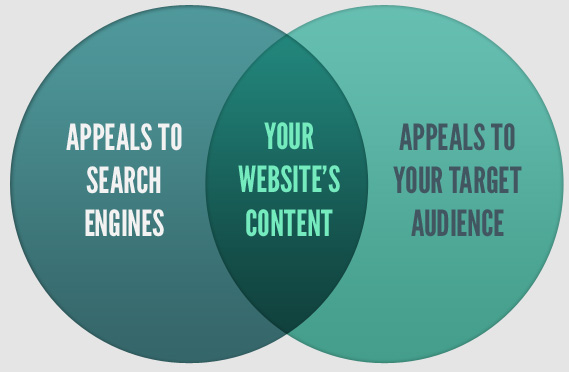Why You Need a Content Strategy (Even If You Think You Don’t) – Part One
How is your site’s content helping you grow your business and reach your target audience? You’d be amazed how many people have no idea.

The success of your website doesn’t begin and end with its design. In fact, content fuels design – not the other way around. Content too often becomes an afterthought when really, it is the lifeblood of a site.
Too many beautiful websites slip into the dark, dusty corners of the web because the content falls flat. Here’s how to make sure yours isn’t one of them.
KNOW YOUR GOALS
In very general terms, these three goals should be the driving force behind your site’s content strategy:
- ATTRACT
- ENGAGE
- INSPIRE
We’ll get to exploring each of those more deeply in a minute. But first, ask yourself these questions:
- Who is my target audience?
- What does my target audience care about?
You can’t have a clear and effective content strategy without knowing the answer to those two questions.
Think you don’t have time to be strategic? Yeah, I hear that a lot. But no matter how short of a timeframe you have to work with, you’ll be saving yourself a lot of time, money and headaches if you make the investment early on to develop a content strategy – rather than trying to go back and piece one together later.
GOAL #1: ATTRACT
Nobody wants to throw a party with no guests. Likewise, nobody wants a website with no visitors. You have something to say – and you want your target audience to hear you. Search engines like Google and Bing are providing you with a stage. You just need to know how to use it.
Here’s the rub…
Appealing to your target audience while also getting noticed by search engines is a bit of a balancing act.
If you stuff your site full of keywords and industry jargon, you might give your site a brief boost in search-engine rankings, but who wants to read something that reeks of marketese? Nobody, that’s who. Plus, the search engines are advanced enough to eventually catch on to what you’re trying to do, and they don’t like it.
On the other hand, if you’re too clever and abstract with your site’s content, it might be more interesting to users, but search engines won’t understand how to read between the lines in order to accurately classify your site in their rankings.
Somewhere between feeding the search engines plenty of keywords and search-friendly content and delivering a message that your target audience will actually want to read – therein lies the sweet spot. And yes, it’s totally possible to accomplish this.
Finding the balance
The general rule of thumb is to keep your keywords or keyword phrases limited to about 5% of the content on any given page of your site. Any more than that and you’ll run the risk of ranking poorly with search engines and/or annoying your users. Does it have to be an exact ratio? Of course not. But this simply goes to show that your website doesn’t need as many keywords as you might think it does in order to achieve the right balance.
Also, the keywords used in your page titles/descriptions, headers and subheaders will receive special attention from search engines when your site is being categorized in their listings. This gives you even greater opportunity to highlight relevant topics.
A copywriter who knows her stuff will understand this balance and the key areas to focus on.
Word to the wise…
DON’T put all of your focus in this one area. Way too many people get bogged down by Search Engine Optimization (SEO), and there are plenty of so-called SEO experts eager to convince you this is way more important than it actually is. Let’s be honest – SEO isn’t what it was ten years ago, or even five years ago. Read more here about why SEO is dead (or at least on its way out).
What matters more than the optimization of your static content? Compelling, relevant and frequently updated content.
Coming up in Part two…
In Part Two of this three-part series, we’ll dive into specifics about how to engage your target audience – something you would think is a given, but is surprisingly overlooked when it comes to developing content for a website.


No Comments